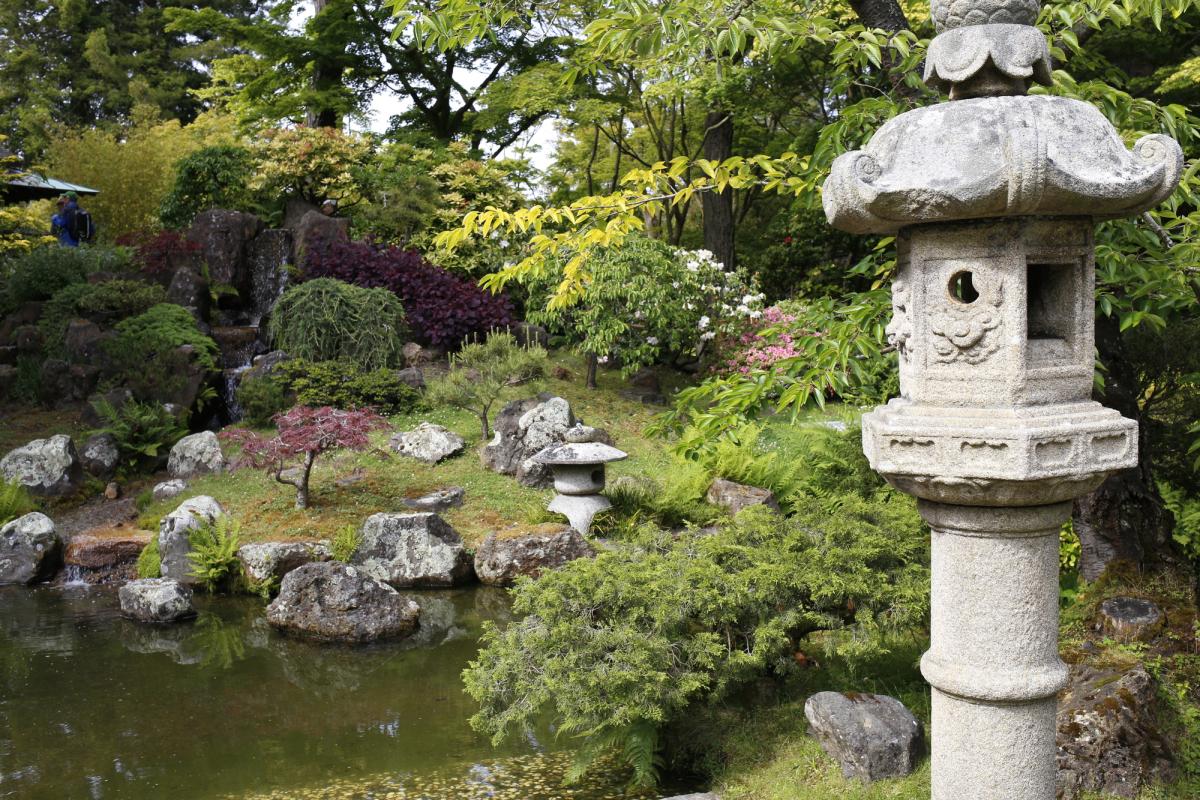Discover the benefits of having a zen garden at home and what its main elements are
Japanese gardens are a celebration of harmony between man and nature, in which each element is arranged to evoke serenity and contemplation.
It was initially created to celebrate ceremonies and have philosophical conversations.
Inspired by the philosophy of Zen, What are these gardens called in the West?, they are true visual beauties; where stones, water, plants and architectural structures combine in compositions that seek to convey peace.
Each element is chosen and positioned with precision to create a scene that invites introspection and connection with spirituality.
In Japanese gardens, simplicity is elevated to supreme beauty and each visit provides calm to stressful days.
Garden structure
The main elements that make up the Zen garden are: water, stone, gravel, stone lanterns, sand, bridges and plants.
Its structure can be made in limited spaces or not, where each element is where it should be, and the size of the garden does not interfere with its symbolism or transmission of peace.
The Japanese garden at home is ideal for those looking for a space of relaxation and tranquility, to meditate, for example.
Creating a garden at home can be a modern and useful idea to beautify your home.. Everything you need to assemble a sane: light colored stones, lanterns and various plants, like bonsai.
Garden colors
Test more neutral colors, to give a traditional look, or a cheerful color to liven up the environment are two different options for those who want to create a creative place..
With the power of colors, it is possible to have a more relaxed and less traditional environment.
It is quite common in China to incorporate the color red into gardens., being used as a symbol of fire, also adding personality to an environment that is often neutral color.
Water element
Water symbolizes the cycle of life, can be placed in cascade format, for example.
In indoor locations, that it is not possible to add water, It is possible to represent this symbolism through gravel, sand and small stones.
In places where there is a lake, great elements that add a lot to the Japanese garden are carp, who swim against the current, demonstrating the strength to fight against life's adversities.
These fish are very symbolic in Eastern culture..
Stones
Stones and gravel are very representative in Japanese culture, being able to play the role of mountains and hills, or the evolution of human beings, in the sacred lands.
The sand, on the other hand, absorbs and recycles energy available in the environment.
stone lantern
The stone lanterns, also known as ishidoro, They are true traditional Japanese sculptures that bear traces of their architecture and religiosity.
They generally have five sections, representing the five Buddhist elements.
They symbolize the enlightenment of the mind, being in contact with the earth which is the basis of life.
Bridges
Very common in the Japanese garden and one of the main symbols, bridges are linked to the transition from the mortal to the sacred.
Can be made from bamboo, wood, stone and contain an arched shape.
Glasses
Pots can be used when it is not feasible to plant directly in the ground. Some species also find it easier to grow in pots..
Sign up to receive Decor News first!
To maintain balance with the environment, opting for pieces with neutral tones is a good tip.
Plants
The greatest charm of the garden, for sure, It is the plants and flowers that enchant the environment. You can opt for more traditional Japanese greens, like bonsai.
Flowers can be chosen according to the country's climate and some specific ones have sacred meanings..
Good plant options are cherry trees, bamboos and colorful flowers. It is also possible to opt for hanging plants, like kokedama or ferns.
Composing the wall with a flower wall is also a great option for expanding plants in the garden., besides being interesting to mix the sizes of vegetation, with medium trees and small shrubs.
All these species are common plants and can be easily found, since a floristry in Santo André to a flower shop in São Paulo.
To maintain a rustic look, It is possible to use small trees and furniture to compose the scene.
Spaces to create the garden
The zen garden can be located in any environment, as intern, under a ladder, or on a balcony.
The important thing is to maintain the sacredness and symbolism of each element in the garden..
It is possible to optimize unused spaces, small spaces or create a common place, as a backyard for relaxation and wide-ranging conversations, table and chairs can be added to enjoy the anti-stress environment.
Japanese garden on the lawn
For large houses with lawns, It is possible to create a private more oriental corner for moments of meditation.
For houses without an external area, some unused strategic points could be a small garden with oriental elements.
Landscaping
For a cozy and stylish home, it is possible to opt for light areas with Japanese garden ornamentation, in a place where sunlight hits and adds charm to the environment.
Wooden walls are good options to create a garden environment., when chosen to be in a internal environment.
With landscaping, it is possible to design a harmonious and functional external environment.
With the use of natural elements, like plants and water itself, the landscaping will promote well-being required, which is common in the zen garden.

Text prepared by the Conversion team.
